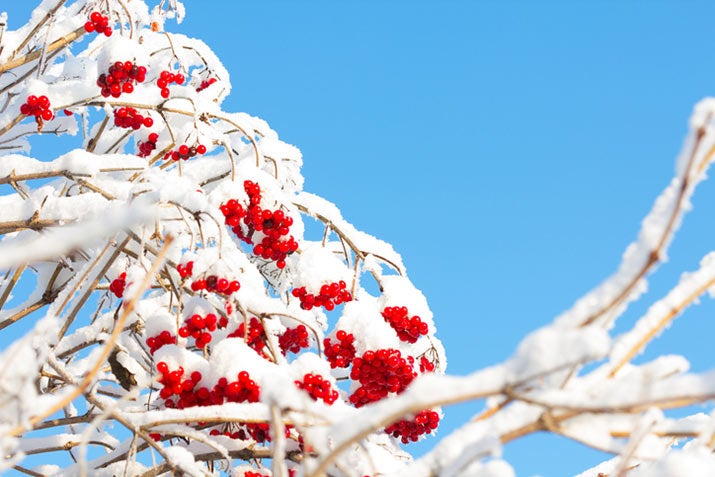If trees and shrubs are the bones of a garden, perennials are the wardrobe. While annuals provide constant colour, perennials add more excitement. They help create a garden that is constantly changing. Not only can they produce a beautiful scene but their seeds, nectar and pollen provide valuable food for birds, butterflies and other wildlife.
Find a warm and comfortable spot to sit and dream with your garden books and magazines. Think about what you would like your garden to achieve. Do you hope for flocks of songbirds, colourful butterflies or helpful ladybugs? Are you picturing bright colours throughout the seasons or a calm sea of green with a diversity of textures? Taking some time to plan your additions can help.
Once you have a better idea of how you would like to enhance your garden, consider our perennial tips:
- Think of the mature height and width of any perennial you are considering. Place it accordingly. You don’t want to lose a short plant at the back of a bed or block a window with a towering plant.
- Choose perennials that thrive in the conditions of your garden such as light and moisture. For example, a plant that requires full sun will struggle in a shady backyard and probably won’t bloom.
- If you’re adding woodland wildflowers to your garden, such as trilliums, remember that in nature they grow in deciduous woods where they receive spring sunlight before the trees leaf out. They will require this same spring sunshine and summer shade in your garden so plant them under deciduous trees.
- Think about what you hope the plant will achieve. Do you want it to attract butterflies, add colour, or brighten a shady corner? Do your research and choose accordingly.
- If you’re buying more than one plant, try them out together at the nursery to see if they compliment one another.
- If you can’t resist an unplanned purchase, be sure you understand the light and soil conditions it requires and choose the best spot in your garden.
- Don’t forget that flowers aren’t the only appeal of perennials. Leaf colour and texture can add great appeal to a garden as can interesting seedheads like that of prairie smoke.
- For tips on design see our design section.
- Choose perennials that bloom at different times so that you have colour throughout the growing season.
- Check out our native plant encyclopedia for help choosing the plants best suited to achieve your goals.
When to Plant
- Spring is the most popular time to plant perennials but they can be planted at other times.
- If you’re planting during the heat of summer, choose an overcast day, preferably before rainfall is expected rather than during a drought. Or plant during the cool of early morning.
- Fall is a great time to plant perennials if you allow sufficient time for their roots to develop before hard frosts hit. In our gardens we try to allow about a month before the hard frosts hit. It also allows you to take advantage of sales at nurseries.
Planting Perennials
- If you can’t plant your perennials right away, place them in a shady spot to protect them from the heat of the sun and keep them moist.
- If your planting area doesn’t have great soil, improve it by mixing in compost or well-aged manure.
- Try placing the plant(s) in their pots where you think they should go before digging. This will allow you to see how it looks before committing to any one spot.
- Space perennials to allow for their maximum size as given on the tag. If creating ground cover you can space them more closely.
- Don’t pull plants out of their pot by pulling on the plant. This could break it off from the roots. Instead turn the pot over with one hand ready to catch the plant and gently tap on the bottom of the pot to free it.
Photo: Sarah Coulber - If the plant is root bound (the roots have grown and filled most of the pot) loosen the roots gently before planting.
- Dig the hole to a depth that allows the plant to sit at the same depth as in the pot. If you bury it deeper you can have trouble with crown rot (where the stem meets the roots). And if you bury the perennial too high, the plant will probably dry out.
- Water the hole. If it is slow to drain you may have to improve the soil by adding some compost.
- Add the plant, fill in the soil around the plant and water again.
- You can top dress around the plant with compost to allow it to slowly improve the soil around the plant.
- Once planted, water perennials regularly for the first few weeks until they are able to adapt to their new environment.
- Fall planted perennials can benefit from a mulch of leaves or bark to protect them from freeze-thaw cycles.
Maintenance
- Once planted, water perennials regularly for the first few weeks until they are able to adapt to their new environment.
- Fall planted perennials can benefit from a mulch of leaves or bark to protect them from freeze-thaw cycles.
- 0
- 1

